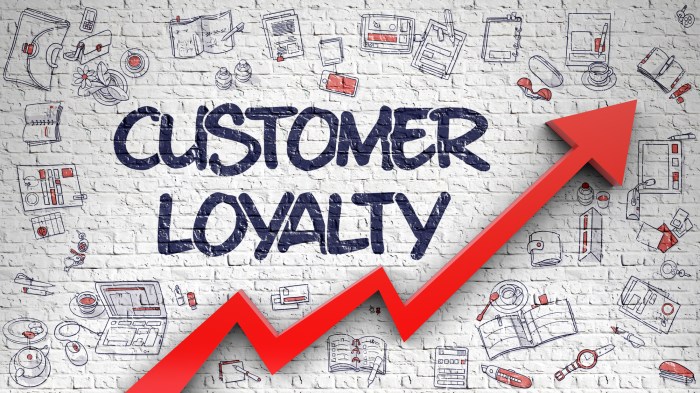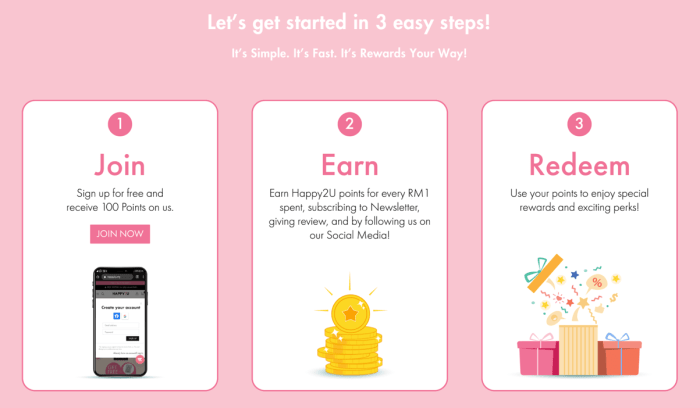Creating a Loyalty Program takes center stage, inviting you to dive into the world of customer loyalty with a fresh and engaging perspective. Get ready to explore the ins and outs of building lasting relationships with your customers through innovative loyalty strategies.
Introduction to Loyalty Programs
When it comes to keeping customers coming back for more, loyalty programs are a powerful tool in a business’s arsenal. These programs are designed to reward customers for their repeat business, encouraging them to stay loyal to a specific brand or company.
Examples of Successful Loyalty Programs
- Starbucks Rewards: Starbucks offers free drinks, food, and more to loyal customers who sign up for their rewards program.
- Amazon Prime: Amazon’s subscription-based loyalty program offers perks like free two-day shipping, streaming services, and exclusive deals to members.
- Sephora Beauty Insider: Sephora rewards beauty enthusiasts with points that can be redeemed for deluxe samples, gifts, and experiences.
Benefits of Implementing a Loyalty Program
- Increased Customer Retention: Loyalty programs help retain customers by offering incentives for repeat purchases.
- Boost in Sales: By rewarding loyal customers, businesses can increase their sales and revenue.
- Data Collection: Loyalty programs provide valuable data on customer preferences and behaviors, which can be used to tailor marketing strategies.
- Brand Loyalty: Customers who are part of a loyalty program are more likely to choose a brand over competitors, fostering long-term loyalty.
Designing a Loyalty Program: Creating A Loyalty Program

Creating a successful loyalty program requires careful planning and consideration of key components that will drive customer engagement and retention.To design a loyalty program, it is essential to incorporate the following key components:
Reward structure
Determine how customers will earn points or rewards, whether through purchases, referrals, or other interactions.
Redemption options
Offer a variety of rewards that appeal to different customer preferences, such as discounts, free products, or exclusive experiences.
Communication strategy
Keep customers informed about their progress, upcoming promotions, and special offers to maintain their interest.
Personalization
Tailor rewards and communications based on customer behavior and preferences to enhance their experience.
Data analytics
Utilize customer data to track program performance, identify trends, and make data-driven decisions to optimize the program.
Types of Loyalty Programs
- Points-based loyalty programs: Customers earn points for purchases or other actions, which can be redeemed for rewards.
- Tier-based loyalty programs: Customers progress through different tiers based on their engagement level, with increasing benefits at each tier.
- Paid loyalty programs: Customers pay a fee to join a loyalty program and receive exclusive perks and benefits.
Tailoring a Loyalty Program to Different Customer Segments
- Segmentation: Divide customers into groups based on demographics, behavior, or purchase history to create targeted offers and rewards.
- Customization: Offer personalized rewards and experiences based on individual preferences and interactions with the brand.
- Feedback loop: Collect feedback from customers to understand their needs and preferences, then adjust the loyalty program accordingly to better serve their expectations.
Implementing a Loyalty Program

Implementing a loyalty program involves several key steps to ensure its success and effectiveness. From setting up the program to utilizing the right technology and promoting it to customers, each stage plays a crucial role in driving customer engagement and retention.
Setting Up a Loyalty Program
Setting up a loyalty program begins with defining clear objectives and determining the type of rewards to offer. This includes deciding on the structure of the program, such as points-based, tiered, or punch-card systems. Businesses also need to establish the eligibility criteria for customers to participate and create a seamless sign-up process. Additionally, outlining the terms and conditions of the program is essential to avoid any misunderstandings.
Technology and Software Requirements
To effectively manage a loyalty program, businesses need the right technology and software solutions. This includes customer relationship management (CRM) systems, loyalty program management platforms, and mobile applications for customers to track their rewards. Integration with point-of-sale systems is crucial for capturing customer data and transaction history. Automation tools can also help in sending personalized offers and notifications to members.
Launching and Promoting the Loyalty Program, Creating a Loyalty Program
Launching a loyalty program requires a strategic approach to generate excitement and encourage customer participation. Businesses can promote the program through various channels, including social media, email marketing, and in-store signage. Offering exclusive sign-up bonuses or discounts can incentivize customers to join. It’s also important to regularly communicate the benefits of the program and engage with members through targeted promotions and rewards.
Managing and Improving a Loyalty Program
Once a loyalty program is in place, it is crucial to continuously manage and improve it to ensure its effectiveness in retaining customers and driving repeat purchases.
Tracking and Measuring Success
It is essential to track and measure the success of a loyalty program to determine its impact on customer retention and overall profitability. Some key metrics to consider include:
- Customer retention rate
- Repeat purchase rate
- Redemption rate of loyalty rewards
- Net promoter score (NPS)
Retaining Loyal Customers
Strategies for retaining loyal customers and encouraging repeat purchases include:
- Offering personalized rewards based on customer preferences and behavior
- Creating exclusive offers and promotions for loyal customers
- Providing excellent customer service to enhance the overall customer experience
- Implementing a tiered loyalty program to incentivize customers to reach higher levels
Evolving and Improving
To evolve and improve a loyalty program over time, consider the following strategies:
- Collecting feedback from customers to understand their needs and preferences
- Introducing new and innovative rewards to keep the program engaging
- Testing different approaches and analyzing the results to optimize the program
- Utilizing data analytics to gain insights into customer behavior and tailor the program accordingly
